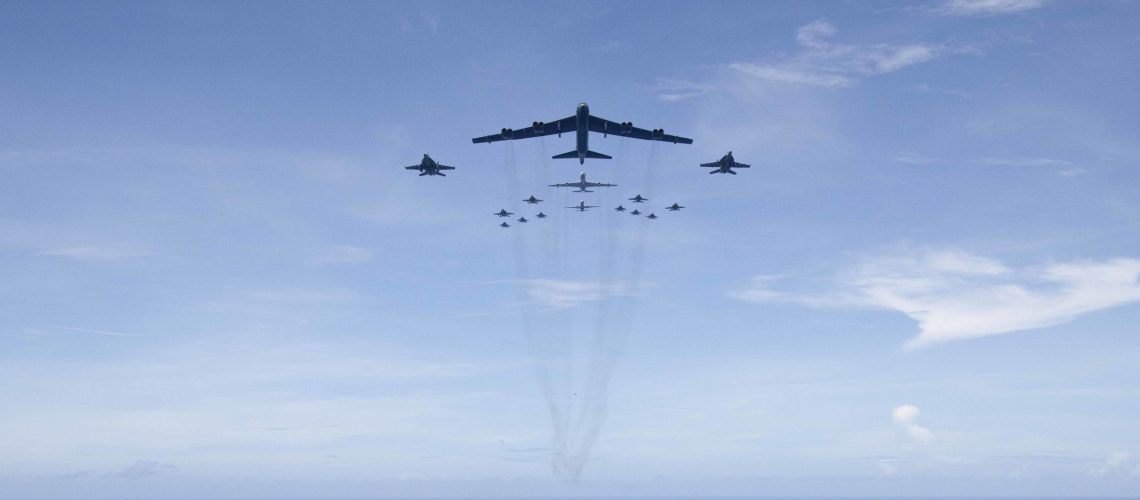With history thought by many to have ended in the 1990s, so did serious consideration of the doctrine of, and the case for, deterrence.
Against the perception of an indeterminate albeit long-term state threat, nuclear deterrence was retained; but conventional military deterrence was effectively abandoned in pursuit of a peace dividend; meanwhile emerging systemic threats to Western democracy and the Rules Based International Order were largely missed or dismissed.
9/11 shook the US-led West and exposed its vulnerability to terrorism both at home and from failed states. The US-led response to 9/11, the ‘Global War on Terror’, dominated operational activity, thinking and military spending in the US, distorting conventional military capabilities. It was much worse for its closest military ally the UK, where successive governments created a scarcity of funding that amplified inefficiencies and even incentivised bad behaviour in procurement. Meanwhile too many allies in Western Europe disinvested from defence as quickly as they could.
Putin took advantage and undeterred by the West, launched operations against Chechnya, Georgia, Syria (not Assad) and Crimea, directed assassinations, and used nerve agents and nuclear materials in the UK, all without serious consequences. Xi’s PRC aggressively contested borders with 10 neighbours, lied about its regional ambitions and the military purpose of its installations in the South China Sea, and accelerated the extraordinary military expansion that continues today.
Putin’s 2022 ‘special military operation’ (SMO) against Ukraine surprised most in the West because they had essentially discounted the possibility of state-on-state conflict in Europe, never mind a protracted state-on-state conflict that included the threat of the use of nuclear weapons. The SMO cemented Russia’s political and economic ties with an increasingly assertive PRC, and military ties with Iran and the DPRK. It connected, in an increasingly concerted way, European and Indo-Pacific risks (Ukraine, Iran, Taiwan and North Korea) that challenge the democratic West. These will endure as long as the regimes in Moscow, Tehran, Beijing and Pyongyang survive. The perception of Russian success or failure in Ukraine will impact the risk-reward calculus in each. The risk of conflict involving each is uncomfortably high, and while the primary risk is conventional the tail risk in each case is nuclear.
The case for nuclear deterrence is strong because the dreadful consequences of it failing are obvious. NATO nuclear deterrence has worked so far in Ukraine. The changing nuclear landscape (weakened treaty systems on proliferation and arms control, growing arsenals, and new nuclear and near-nuclear states) demands urgent review, not only of capability but the policy and doctrine for its delivery. The PRC has the world’s fastest growing nuclear arsenal; by 2030 the US will face two nuclear peer adversaries.
The case for conventional deterrence is also clear, and not just because conventional war is the most likely source of nuclear war risk. Ukraine highlights the ability of authoritarian states to mobilise, to sustain casualties, and to withstand economic pressure from international sanctions. It reminds us of the sheer cost of fighting and rebuilding after conventional state-on-state wars. By its intensity and protracted nature, it has exposed a political West with hollowed-out militaries, and inventories and industrial bases optimised to support short, sharp ‘discretionary’ wars. Credible conventional deterrence requires the capability to sustain high intensity operations.
There is a clear interest in deterring conflict especially with the PRC. The rapid expansion of PLA capability shows Beijing’s appetite for power projection and the growing threat to democratic Taiwan which is strategically vital as the world’s primary Semi-Conductor hub and the launch-pad to break the First Island Chain. The possibility that a Taiwan ‘event’ involving protagonists eyeing first-mover advantage might trigger conflict between the world’s largest economies is uncomfortably high.
Conventional deterrence should inform the prioritisation as well as scale of defence spending; in the light of today’s geopolitical tensions, this means a credible expeditionary capability to contribute to US-UK, NATO or AUKUS missions, a framework capability (such as through the UK-led JEF) for NATO’s European Pillar, and UK national tasking such as delivered in 2000 in Sierra Leone.
A full spectrum approach is needed if the political West is to overcome emerging counter-intervention capabilities that extend beyond the military and include ‘grey zone’ threats to the Rules Based International Order (RBIO), its international influence, its democratic principles, and even its domestic resilience.
The broadest of the three pillars of deterrence, it must span trade, supply chain and industrial policy, domestic and international rule of law, overseas development, education, and (as for the other strands) all things technological. It must promote, not least in the Global South, the benefits of the Westphalian system (national sovereignty) and resilience. It must prioritise stability but protect democracy where it exists, including at home (where others seek to take advantage of open societies and the vulnerability of media and elections), and promote it where practicable. It must promote knowledge of history to defeat revisionist efforts to paint the West as a persistently bad actor.
Governments, despite weak growth and significant public debt, and important considerations on climate policy and energy security, must show sufficient long term strategic intent to trigger defence industry and financial sector investment, and a narrative that will restore expertise in government and educate and cohere domestic support for defence and security. The ability to deter activity that will undermine democracy and the RBIO is vital, but in addition to and not instead of investment in nuclear and conventional capability. Credible deterrence requires the three to be integrated; but each must be credible in its own right. Not delivering deterrence now is not an option.
Neil Brown is Geopolitical Strategist at Deltroit Asset Management, a member of the Organising Committee for the London Defence Conference and a Senior Associate Fellow at the Council on Geostrategy.
This essay is published as part of a series examining the future of deterrence, in theory and in practice, ahead of the London Defence Conference 2024.

